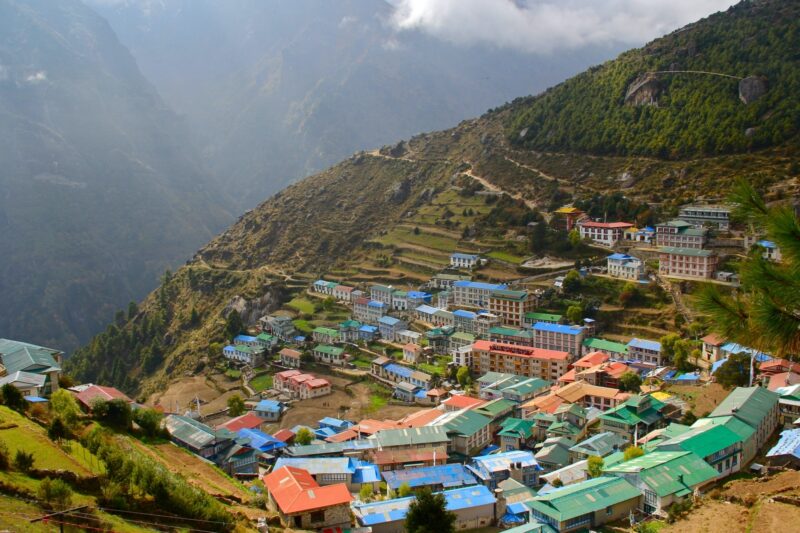Glacial melt spells more trouble in the Himalayan LDCs
Share

The landmark report ‘The HKH Assessment – Mountains, Climate Change, Sustainability and People ’, has justifiably received widespread international media attention. A huge amount of rigorous work went into the report. More than 200 scientists worked on it over five years, with another 125 regional and international experts reviewing their work. The report adopted the IPCC style by having coordinating lead authors, lead authors, contributing authors and review editors for each chapter.
The main highlight of the report picked up by the media is that one third of HKH glaciers will melt by the end of the century even if global warming is kept to around 1.5ºC, in line with Paris Agreement. This figure is based mainly on a seminal study on the impact of temperature rises on glaciers in the high mountains of Asia published in Nature in 2017.
Digging a little deeper into the statistics reveals an even bleaker picture for the LDCs in the region. The five HKH LDCs – Afghanistan, Nepal, Bhutan, Bangladesh and Myanmar – are fed by the glaciers of the Hindu Kush, Himalaya and Hengduan Shan mountains. The meltwater from these glaciers provides a lifeline for millions of people living in the HKH LDCs, providing them with ecosystem services such as fresh water for consumption, food production and energy. Already, three of these five LDCs (Myanmar, Bangladesh, Nepal) are among the top 11 countries worst affected by climate change, according to Germanwatch’s Global Climate Risk Index. Therefore, any fluctuation in glacial meltwater will have profound impacts on the individuals as well as overall economy of these countries.
According to the ICIMOD study, by the end of the century, the glaciers in the Hindu Kush, West Himalaya, Central Himalaya, East Himalaya and Hengduan Shan will retract to 52%, 57%, 52%, 46% an 40% of their current size respectively, if global temperatures increase by a Paris Agreement compatible 1.5°C. This averages out at almost 50% for the five regions. Therefore, the headline statement that one third of HKH glaciers will melt translates to one half of glaciers in the HKH LDCs. A higher level of warming paints an even darker picture for the HKH LDCs. Under the RCP4.5 and RCP8.5 scenario which corresponds to a temperature increases of about 2.4°C and 4.3°C above pre-industrial levels by the end of the century, almost 70% and 85% of the glaciers are projected to melt in the five regions feeding into the HKH LDCs, respectively.
Combining these estimates with another important recent study indicates an even worse scenario for HKH LDCs. According to the report, even if we somehow stop climate change dead in its tracks right now, more than a third of the world’s glaciers would melt regardless. This is because glacial ice takes decades to fully respond to past temperature changes, including the human-caused global warming that has already occurred. With a Paris Agreement compatible 1.5ºC of warming, most of the glaciers are likely to be close to equilibrium by the end of the century, and therefore unlikely to further melt at much higher rates. However, with the continuous warming during the 21st century outlined in the RCP4.5 and RCP8.5 scenarios, the glaciers would not have reached equilibrium by the end of the century, with substantial additional glacier loss likely to occur beyond 2100. This suggests that earlier and more ambitious climate action will have a disproportionately greater impact on the long-term preservation of glaciers.
The figures presented above clearly highlight the vulnerability of the glaciers in the HKH LDCs even at 1.5ºC of global warming. But at the same time, they also show that further glacial mass loss can be avoided if warming is limited to this level. The target of 1.5ºC is a matter of life and death for people living in HKH LDCs.
Unfortunately, the NDCs submitted to the UNFCCC in the previous round show that we are far from achieving the Paris target. The period from now to 2020 is a critical window of opportunity for a collective push for stronger 2030 NDCs with increased emission reduction targets. A failure to do so will most likely put the Paris Agreement target out of reach.
The LDC negotiating group in the UNFCCC has recently appointed Bhutan as its new chair. These are ideal settings for Bhutan, an LDC highly susceptible to the melting of HKH glaciers, to play a leadership role in creating political momentum for more ambitious new and updated NDCs by 2020.













